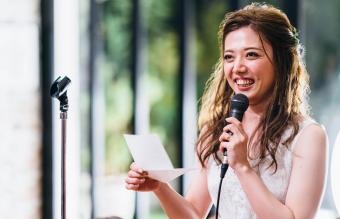
Planning a Jewish wedding dance can include a number of traditional Jewish dances interspersed between contemporary and secular music. The bride and groom often decide what to include based on how traditional the wedding festivities will be.
Current Jewish Dance Trends
Jewish weddings are often ripe with customs passed down from generation to generation, and dances are no exception. Contemporary couples may choose to devote a portion of their wedding reception music to participating in classic dances. They may base this upon their own wishes, the desires of their parents, or the ratio of guests who will understand how to engage in these dances.
If a large percentage of the guests are not familiar with Jewish dance customs, it is courteous to include more contemporary or even secular music along with the traditional dances. Many American couples often choose to incorporate dances like the father/daughter dance. Of course, the ultimate decision on how to conduct the wedding dance is up to the couple.
Couples may choose to hire a Jewish band instead of using a wedding DJ for their dance. The band is often one with Jewish origins and is familiar with current religious songs, modern music, and traditional Jewish music. To save money, couples might also ask a friend or relative to act as a DJ and intersperse some Jewish CDs featuring traditional dance songs along with other requested tunes into the musical lineup.
Traditional Jewish Wedding Dance Options
Two of the most traditional and well-known Jewish wedding dance numbers are the Hora and the Mezinke Tanz (Krenzl). These two dances are often done during a Jewish wedding reception.
Hora
During the Hora, the bride and groom are lifted above the shoulders of guests. Sitting upon chairs, they may wave handkerchiefs at each other or hold onto the ends of a single handkerchief. A large circle of guests is formed around them, dancing clockwise or counterclockwise. Foot movements include kicks and grapevine-like steps. Weaving and bopping up and down may also occur. The circle of friends and family often alternate between a large loose circle and coming in close to the couple and out again.
Several variations of the Hora can be done. It is usually danced to the song Hava Nagila or a compilation of energetic traditional music.
Mezinke Tanz (Krenzl)
The Mezinke Tanz is a dance that arose out of the traditional Krenzl. Krenzl, which refers to a crown, occurred when the last daughter was married. The mother of the bride would be seated in the center of a circle and crowned with flowers as her daughters or guests danced around her.Dancing of the Mezinke Tanz is reserved for parents whose last son or daughter has been married. Both parents are seated in the center of a large circle, with crowns atop their head, as people dance in a circular fashion around them.
Celebratory Jewish Dances
A number of other Jewish dances are often done in celebration of events like weddings and Bar Mitzvahs. These dances can include:
- Sher (Sherele or Scissors Dance)
- Freylekhs
- Broiges Dance
- Mitzvah Dance
- Bulgar
For instructions on how to do several popular dances, visit David's Instruments of Praise where you'll find video instructions.
Helen's Yiddish Dance Page also includes a detailed listing of traditional Jewish dances, many of which are appropriate for weddings. Downloadable instructions in PDF form can be found for many of the dances archived.
To see Jewish wedding dance clips online, visit a video streaming site, such as YouTube and search for the particular dance. Or, simply search for general Jewish dances. Regardless, a number of dance videos are available for the uninitiated viewer. Watching these can help a guest unfamiliar with Jewish customs prepare for a traditional dance reception. The couple should note, however, that not all guests may be familiar with the dances and no one should be pressured to participate if they are not comfortable with it.
Celebrate and Dance
Jewish couples will often choose to celebrate their wedding with a dance and reception. The choice of music may reflect their heritage or simply their personal music taste. The Hora is often the most commonly performed dance at a Jewish reception, and dancing traditional cultural dances can lead to happy memories for many anniversaries.







